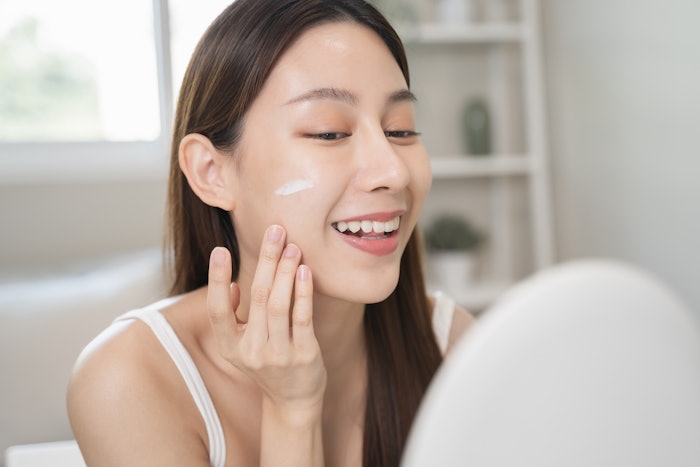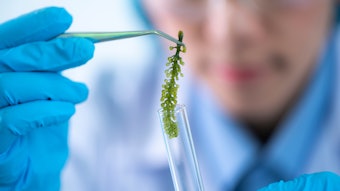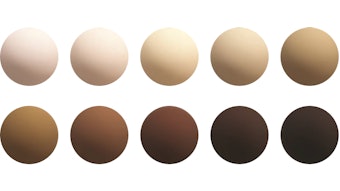
LG Household & Health Care (LG H&H) recently revealed how different parts of the face age at different rates using Vision AI, the company's visual AI platform, to analyze 16,000 Korean women. According to the company, this study is the largest of its kind in Korean subjects and is a key part of LG H&H’s Skin Longevity project.
The study, published in the Journal of Investigative Dermatology, identified six key indicators of aging and the genes that influence them, paving the way for a new era of personalized skin care. Based on these findings, the company aims to provide customers with new experiences and to expand its unique customer value.
Aligning AI with Consumer-perceivable Aging
Visual AI enables machines to identify and understand visual data similarly to human vision. As the company explained, by analyzing high-resolution facial images of women ages 20 to 60, LG H&H’s R&I division used AI to track subtle changes in 68 facial points.
"In this study, Vision AI played a pivotal role in capturing morphological signs of aging," the company shared with C&T. "It was used to automatically and consistently extract 68 facial landmarks from high-resolution facial images, enabling us to develop quantitative indicators for subtle changes in specific facial regions such as the eyes, mouth and contours."
According to LG H&H, through this approach, customers can visually experience the overall progression of facial aging in a way that is easy to understand. This differentiated technology scientifically evaluates perceivable aging of the entire face by the human eye rather than the conventional method of measuring only localized skin areas.
"We focused not only on aging characteristics such as wrinkles, tone and pigmentation, but on morphological changes that progress differently across various areas of the face," LG H&H told C&T.
"At the core of this focus is actual consumer demand. Consumers seek more than just products — they actively want personalized skin care that reflects their age, lifestyle, environment and even genetic traits.
"Additionally, the lack of data-driven, scientifically validated personalized solutions in the market was a key motivation for our research. Based on this background, we are developing technologies to precisely analyze and predict individual skin characteristics."
Expected and Unexpected Insights
The results allowed researchers to quantify six signs of aging, including: eye tail sagging, eye width ratio, philtrum (lip divot) height ratio, lip ratio, facial width ratio and facial contour degree ratio.
A core finding was that "aging clocks" vary by facial region. For example:
- The eye area begins to show accelerated sagging before age 50.
- The lips and surrounding skin show significant changes after age 50.
- and Facial contours change steadily across all age groups.
This suggests that skin care should adapt with age, per the company. For instance, focusing on eye wrinkles in consumers' 30s and 40s, then shifting to lip and mouth-area elasticity after 50 could be more effective.
"We were able to validate our initial expectations with the data, while also uncovering unexpected insights. For example, facial aging phenomena that we were familiar with in daily life — such as under-eye sagging and changes in facial contours — were quantitatively confirmed through AI-based image analysis," the company noted.
In particular, contrary to the previous assumption that facial aging would progress slowly overall, it was revealed that the timing and patterns of prominent aging vary significantly by facial region. "For instance, eye-area sagging was found to intensify significantly before the age of 50," LG H&H described. "This allowed us to scientifically confirm differences in aging patterns and acceleration by region and age group."
GWAS Identifies Genetic Links to Aging
In addition to visual analysis, the study used Genome-Wide Association Study (GWAS) techniques and identified 10 genetic markers linked to facial aging. These genes are related to skin tissue development and elasticity.
For example:
- the FOXL2 gene is important to the skin around the eyes,
- and the FGF10 gene helps with collagen synthesis, which maintains overall facial structure.
This discovery of 10 genetic markers makes it possible to create skin care solutions tailored not just to a person's age, but also to their unique genetic predispositions, the company notes.
"... GWAS analysis helped us discover 10 genetic biomarkers related to facial aging, enabling us to develop personalized skin care strategies that reflect not only a customer’s age, but also their inherent traits," the company detailed.
"While not all genes influencing skin aging have been identified yet, this study holds significant value in that it confirmed genes that actually affect morphological facial aging. For example, the FOXL2 gene, known to be involved in eyelid formation and function in eye area skin development, was found to be associated with accelerated aging in the eye area when specific genetic variants were present in that gene region.
"These findings serve as scientific evidence for developing personalized solution strategies that consider inherent traits."
Skin Longevity Throughout Life
"Our goal goes beyond simply delaying aging," said Kang Nae-gyu, chief technology officer at LG H&H, in a press statement. "We aim to realize healthy and beautiful skin longevity throughout one’s lifetime. Building on the discovery of the secrets behind region-specific facial aging, we plan to offer precise beauty care solutions that consider both innate traits and age-related characteristics."
In addition, by leveraging LG H&H's Vision AI-based skin diagnostic platform, the company will enhance the perceived effectiveness of its products. "Specifically, by visually displaying aging patterns that change by facial region in real time, customers can easily understand their skin changes and intuitively experience the effects of skin care," said LG H&H.
Future Implications for AI-driven Solutions
This research establishes a new foundation for personalized skin care, promising customization informed by both age and genetics.
"Innovating the customer experience that customers truly feel will become the core of R&D and marketing strategies in the beauty industry," LG H&H wrote. "To respond to the diverse and evolving needs of customers, providing new customer experiences through skin diagnosis and personalized care will become increasingly important.
"Furthermore, we expect rapid expansion in the market for solutions combining core AI-based diagnostic technologies with personalized skin care products. In this evolving landscape, brands that possess strong AI capabilities are expected to secure a competitive edge by offering differentiated customer experiences in the beauty market."










